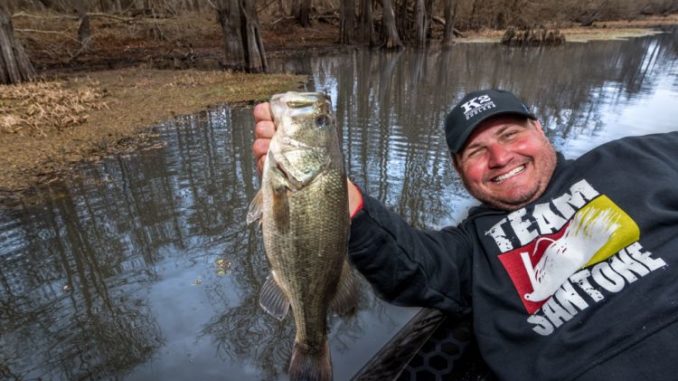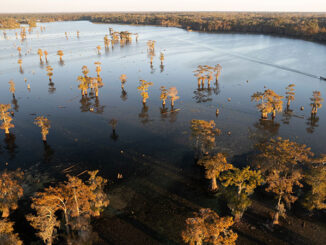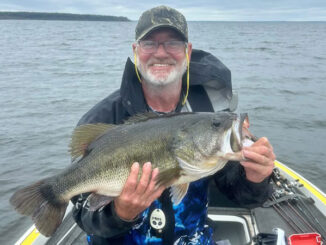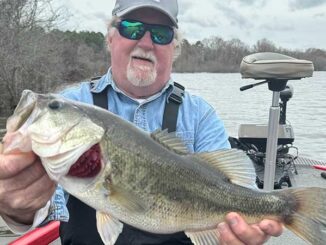
Water temps approaching magic number
Muddy water greeted me and Bassmaster Elite Series angler Cliff Crochet on Friday (Jan. 26) as we turned off the Intracoastal Waterway and headed deep into the Atchafalaya Basin — and water levels were at rock bottom.
“I’ve caught fish on those trees,” the Pierre Part pro angler said, pointing at a line of cypress standing just outside the waterline.
But by the end of the day, we had eked out a dozen bites and discovered something that could help anglers catch fish in the coming weeks.
The first lesson was that water clarity is important, although probably not in the way one would first think this time of year.
Just before we left Belle River Landing, Crochet asked a commercial fisherman friend about locations of pretty green water he expected to hold fish.
We found water clarity ranging from filthy mud to bathtub clear in various locations around the Grand Lake/Big Pigeon portion of the spillway.
But we quickly learned catching fish required what many would say is heavily stained bordering on muddy water. Clarity was no more than a couple of inches.
“We didn’t catch anything in that clear water,” Crochet noted at the end of the day.
The second lesson involved water depth: Namely, bass are in very shallow water. In fact, the shallower canals produced the most bites.
Success was predictably best on the canals sides with sharper banks, and the fish were largely snuggled around wood structure.
Water temperatures ranged from 52 to almost 56 degrees, which surprised Crochet after the recent, prolonged cold spell.
“These fish are close (to the spawn),” he said. “They have to be with that water temperature. We could come back in here in a couple of weeks and it would be on.”
We didn’t catch huge fish — the heaviest weighed about 2 1/4 pounds — but that could change if water temperatures continued to rise and a wave of bass move to the banks.
I caught all of my fish on a silver/black back Sebile Bull Crank squarebill. The bites weren’t wrist-shattering, but they weren’t that spongy strike typical of cold-water fishing, either.
The bait had to be thrown past wood and rolled over the cover. If I didn’t hit the stump or laydown, I didn’t get a bite.
Crochet, on the other hand, used a Santone swim jig to catch most of his fish.
“I’m just steady retrieving it,” he explained. “I might shake it a little when I hit something.”
Again, his greatest success was nearer wood cover.
The forecast doesn’t change much for the next couple of weeks — cool nights followed by warm days, so the water temps should fall much.
It’s just a matter of time before the first wave of fish spawn.


